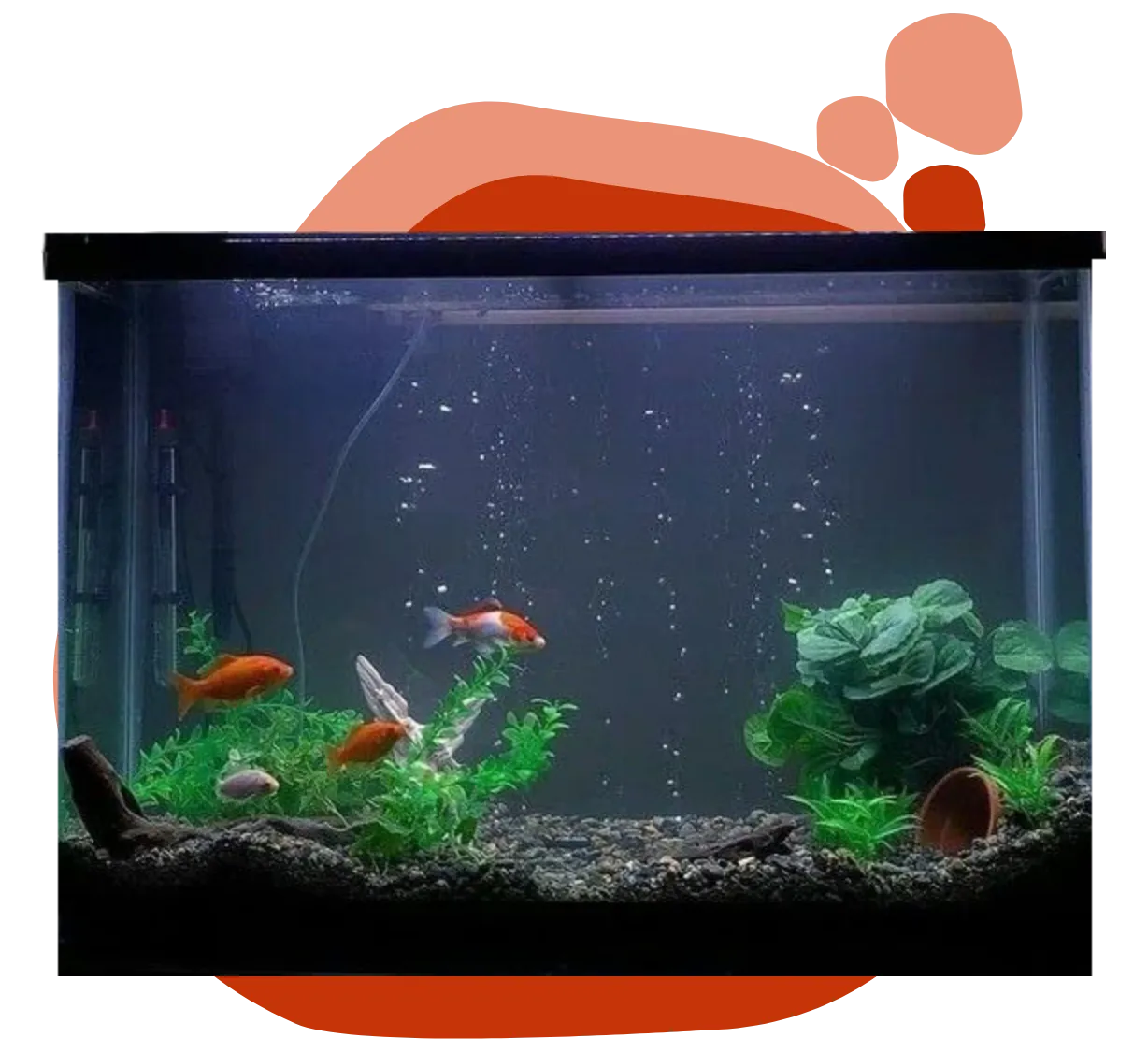
Chapter 2
How to build the best tank for your goldfish
Now that we’ve covered the ins and outs of caring for your new goldfish, let’s move to the part where we build the tank.
By the end of this article you’ll know:
- What tank size do you need
- Where to place it
- The ins and outs of equipment for goldfish
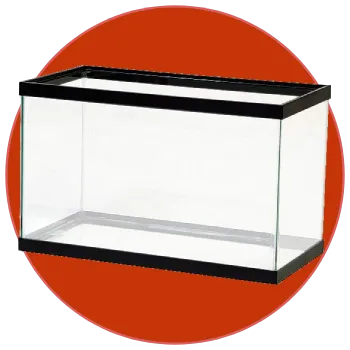
Tank Basics
The Practical Guide
Choosing the right tank
You know, there are many different shapes and forms of tanks out there. For the most part, the actual shape doesn’t matter all that much- as long as it offers enough space for your fish to swim in.
How big of a tank should you get?
Fancy Goldfish
- 30-gallon, and
- 2 fish.
+ Add an additional 10-20 gallons for every extra goldfish.
Common Goldfish
- 40-gallon tank,and
- minimum of 3 fish.
+ Add an additional 20 gallons for every extra goldfish.
What about a bowl?
I’m sure somewhere in your mind you have a mental picture of a goldfish living happily ever after in a bowl above a child’s desk- but that is not the reality.
Goldfish grow to be between 10-12 inches long (or 25 to 30 cm) and have a fairly active swimming style that requires much more space.
Build your own VS Tank kit
Build Your Own
Pros
- Customization: Build a tank tailored to your preferences and available space, allowing for unique designs and sizes.
- Cost Control: Potentially lower costs as you can select budget-friendly materials and components based on your needs.
Cons
- Extra Work: You’ll nee to research and find the equipment.
Tank Kit
Pros
- Convenience: Tank kits come with pre-selected components, saving you time and effort in choosing compatible equipment.
- Complete Package: Kits typically include essential accessories like filters, heaters, and lighting, ensuring a well-equipped environment for your guppies.
Cons
- Limited Customization: Less flexibility in design and size compared to building your own tank.
- Cost: While convenient, tank kits may be more expensive than sourcing individual components, especially for larger setups.
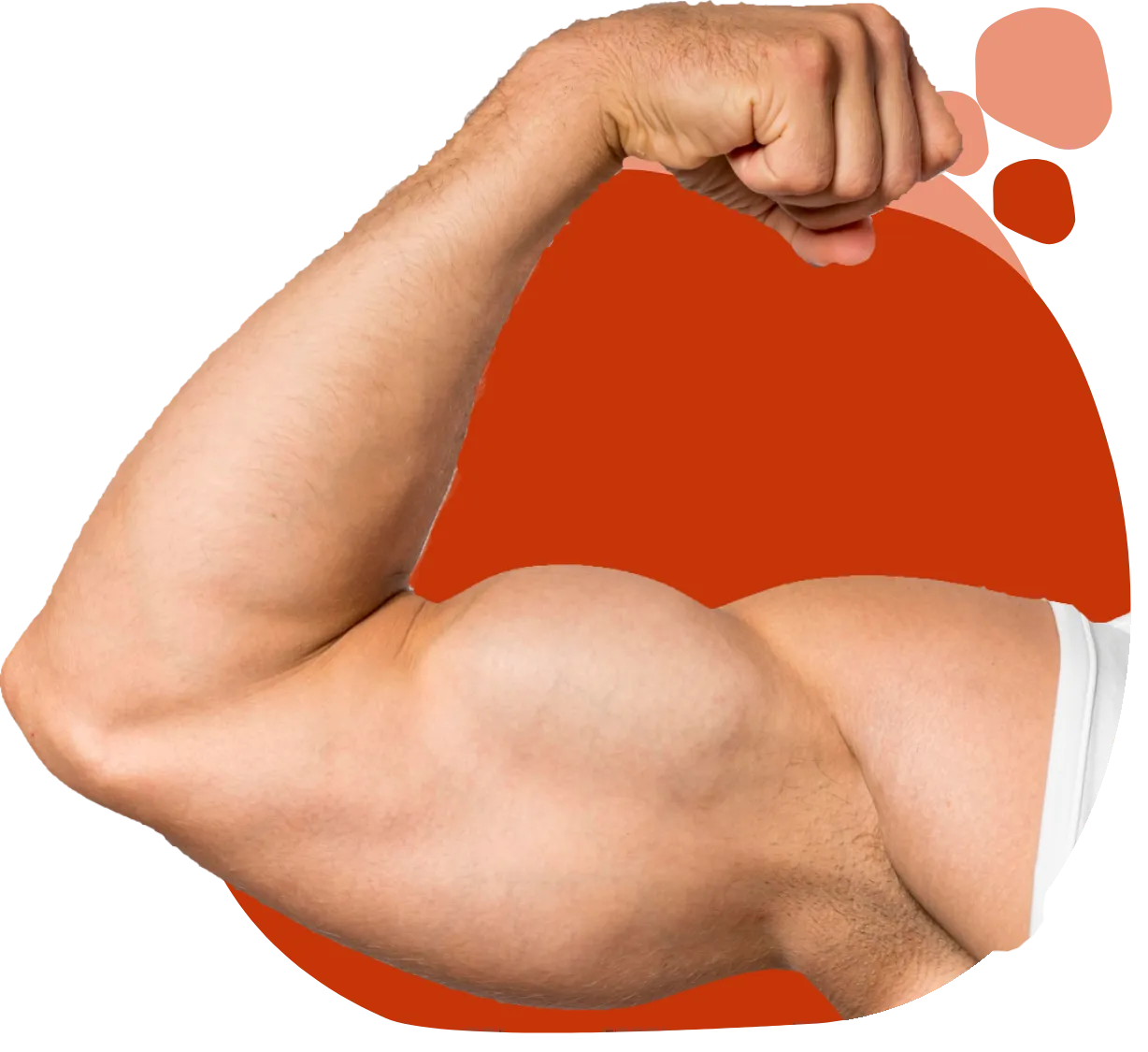
Part 2 - Essential Equipment
The Equipment you can't live without
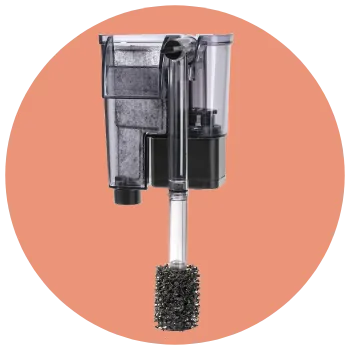
Filter
A filter buys you more time in between water changes. With a filter, you have to change the water less frequently and less of it, so you can spend more time bonding with your fish.
Other Equipment You'll Need
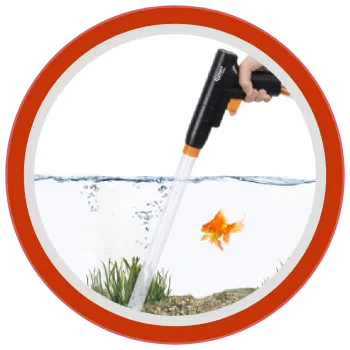
Siphon Pump
Simplifies water changes and removing debris from the substrate.
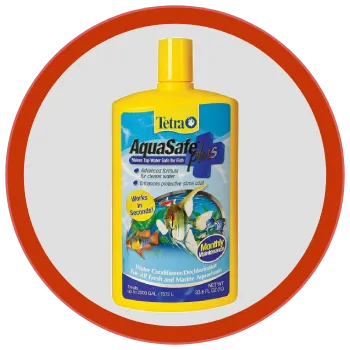
Water Conditioner
Removes harmful chemicals, making tap water safe for use in an aquarium.

Fish Net
A handy tool for safely catching and relocating your fish.
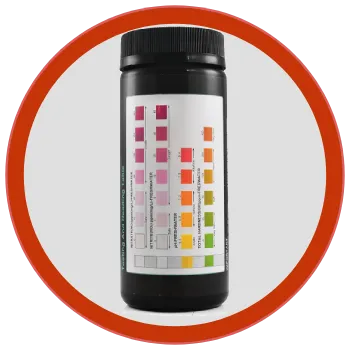
Testing Strips
Help you monitor water parameters, ensuring optimal conditions for your betta.
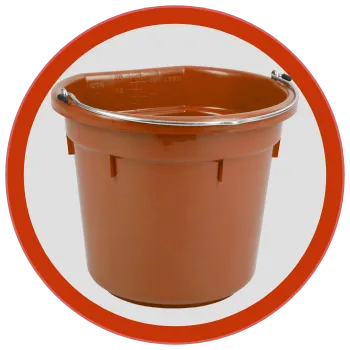
Bucket
An essential tool for water changes.

Tank Decor
Essential for your betta to feel safe and have a place to hide
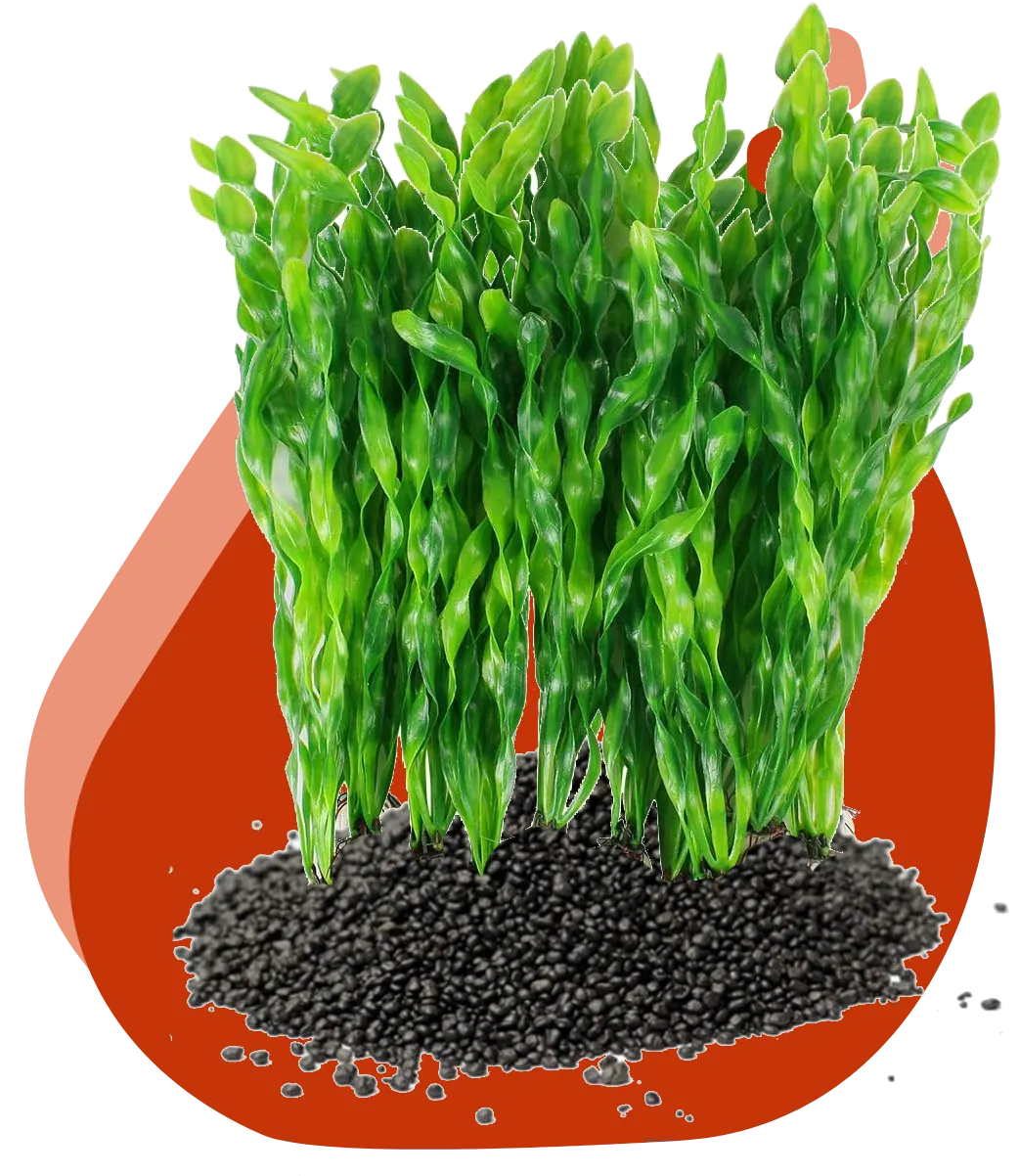
Substrate, Plants & Everything Else
Other tank must have for longevity
Choosing the right substrate
Substrates also come in many shapes and forms and for the most part- all will be good options.
There are sands in various colors, gravel, rock, and many more to just name a few. The only thing you want to avoid is any sharp rock that may scratch your goldfish’s scales and fins. To achieve this goal simply buy substrate that is designed for aquariums.
Side Note: the only 2 substrates you need to be mindful of are crushed coral and limestone. Those are known to lower the pH in your tank and cause problems. If you do decide to go with either or both- you’ll need to incorporate driftwood that will raise the pH and create a balance.
Real Plants VS Fake Plants
Pros
- Natural environment: Plants provide a natural habitat for guppies, offering hiding places, reducing stress, and promoting breeding.
- Improved water quality: Plants absorb nitrates, a harmful waste product produced by fish, contributing to cleaner water.
- Stability: Plants help stabilize water parameters, making the environment more stable for guppies.
- Aesthetics: A beautiful planted tank can be an aesthetically pleasing addition to your home.
- Additional food source: Some plants can offer a supplemental food source for guppies, especially fry.
Cons
- Requires more maintenance: Plants require specific lighting, CO2 levels, and nutrients, demanding more upkeep than a non-planted tank.
- Costs more to set up: Planted tanks require additional equipment and supplies, such as lighting systems, CO2 injectors, and fertilizers, increasing the initial setup cost.
- Potential algae problems: Incorrect lighting, nutrient balance, or CO2 levels can lead to algae blooms, harming both plants and fish.
- Some plants are not guppy-friendly: Certain plants may harm your betta by being sharp, releasing toxins, or competing for resources. Researching suitable plants is crucial.
- Requires knowledge of plant care: Understanding plant requirements for lighting, nutrients, and CO2 is necessary for maintaining a successful planted tank.
Overall, a planted tank can be a rewarding experience for beginner betta keepers, but it requires more commitment and knowledge than a non-planted tank. I would only get plants if you enjoy gardening and caring for them- otherwise, they’re a chore.
Tank Decoration
Believe it or not but tank decor is actually important for your goldfish’s wellbeing.
Tank decorations, such as plants, rocks, and other structures, offer mental and physical stimulation for goldfish. They can explore, interact with their surroundings, and exhibit natural behaviors. And then goldfish, like many other fish, benefit from having hiding spots.
These spaces provide security and help reduce stress, especially in community tanks or if there are multiple goldfish in the same enclosure. Hiding spots can be useful during times of aggression or when the fish need a break from social interactions.
Recap
The most important pieces of equipment you’ll need are the tank and the filter.
You’ll also need substrate and tank decoration for your goldfish to feel safe and avoid unnecessary stress.
The minimum tank size you need to get is about 30-40 gallons, with a minimum of 2-3 fish. The exact amount depends on the type of goldfish you get.
Planted tanks offer many benefits- but you’ll need to care for the plants as well. Only go for a planted tank if you enjoy caring for plants- otherwise, it’ll become a chore.
Look at you now! you’ve chugged a whopping 67% percent of this guide and are ready to move to the next step. In the next and final part, you’ll learn how to set up your tank and perform maintenance.
